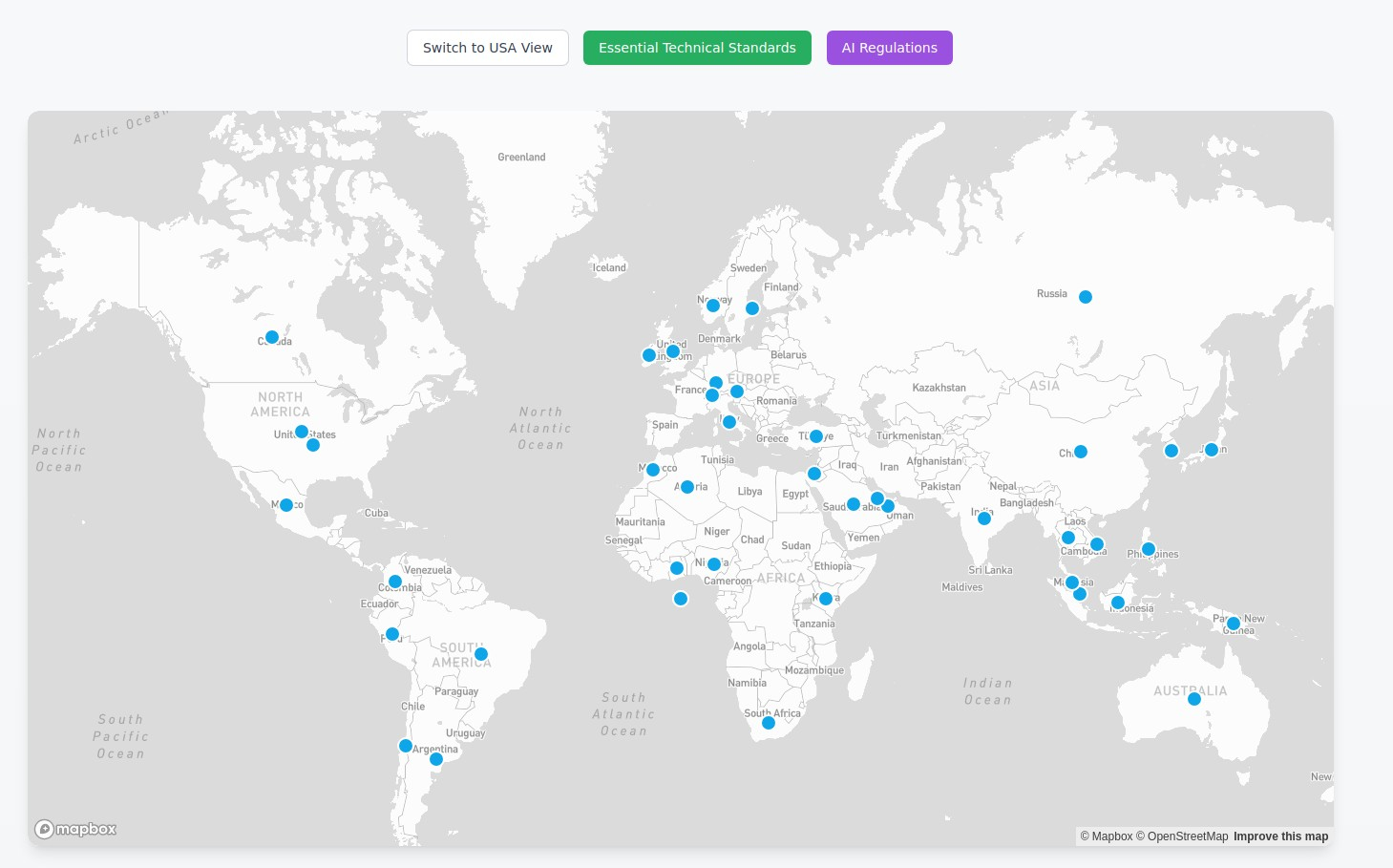Navigating the Digital Frontier: Cybersecurity and Data Protection in Latin America

Latin America has rapidly emerged as a hotspot for cyber activity, driven by accelerated digitalization, expanding cloud adoption, and evolving geopolitical dynamics. While this digital transformation presents immense opportunities, it has also created a fertile ground for financially motivated cybercriminals, nation-state adversaries, and hacktivist groups, exposing the region's vulnerabilities and necessitating robust cybersecurity and data protection measures.

The Landscape of Vulnerability: Key Challenges in LATAM Cybersecurity
The region's susceptibility to cyberattacks stems from several systemic weaknesses:
- Outdated Infrastructure and Software Piracy: Many organizations, particularly Small and Medium-sized Enterprises (SMEs), continue to operate with legacy systems or use pirated software, creating easily exploitable security gaps.
- Insufficient Cybersecurity Governance: A pervasive lack of clear regulations and standardized security strategies across the region exacerbates exposure to cyberattacks.
- Lack of Awareness at High Leadership Levels: Cybersecurity is often perceived as merely an IT problem rather than a critical political, cultural, and business issue, leading to inadequate resource allocation and strategic prioritization.
- Significant Talent Gap: Latin America faces an estimated shortage of 600,000 skilled cybersecurity professionals, hindering its ability to implement and benefit from technological solutions and respond effectively to threats.
- Absence of Mandatory Breach Reporting: The lack of laws requiring victims to report cyber breaches leads to underreporting, which in turn limits collective understanding of threats and impedes proactive defense efforts. Colombia, for instance, has become a "sandbox for hackers" due to this issue.
- Challenges in Public-Private Partnerships (PPPs): Despite their essential role in cybersecurity resilience, forming effective PPPs is complicated by varying legal systems (civil vs. common law), which can lead to ambiguous contract rules and unenforceability if not in exact congruence with codified laws.

A Region Under Attack: Key Threats and Most Impacted Countries
Latin America accounts for approximately 8% of the world's population but experiences about 12% of global cyberattacks, with experts estimating around 1,600 attacks per second. The threats are diverse, ranging from e-crime to sophisticated nation-state intrusions and ideologically driven hacktivism.
www.compliancehub.wiki/ciberseguridad-en-america-latina-navegando-el-desafio-en-la-region-mas-vulnerable/
Ransomware and Data Extortion: Brazil and Argentina stand out among the most affected countries by ransomware. Access brokers frequently advertise network access to entities in Brazil, Mexico, Colombia, Argentina, and Peru, identifying these as the five most ransomware-affected LATAM countries.

Specific high-profile incidents highlight the region's vulnerability:
- Chile: In August 2022, the Ministry of Interior suffered a massive ransomware attack (RedAlert/N13V) involving double extortion, encrypting files and threatening data leaks. The hacktivist group Guacamaya also breached the Chilean military. Chile’s 2018 Banco de Chile breach (where $10 million was stolen) served as a catalyst for cybersecurity development.
- Mexico: In September 2022, the hacktivist group Guacamaya executed a major breach of Mexico's Defense Ministry (SEDENA), leaking thousands of classified documents, including the President's medical records. Mexico's oil company Pemex also experienced an impact on its payment systems from a breach in 2019.
- Colombia: A large-scale data breach in December 2022 targeted the healthcare system through a RansomHouse attack on Keralty, disrupting services and exposing confidential user information like medical records and social security numbers. Guacamaya also targeted Colombian military networks and mining companies.
- Brazil: The Brazilian court system endured 13 consecutive attacks between 2020 and 2022, paralyzing services. The Finance Secretary of Rio de Janeiro was also unable to collect taxes after a 2022 breach. Brazilian organizations are generally perceived as less aware of cyber best practices and risks.
- Argentina: In October 2021, the country's registry office (RENAPER) was infiltrated, leading to personal data and documents being sold on the dark web. Telecom Argentina, the largest internet provider, was hit by a $7.5 million ransomware demand in July 2020.
- Costa Rica: An unprecedented breach of its finance ministry in April 2022 by the Conti ransomware collective encrypted systems and extracted vast amounts of data, leading to a national state of emergency. Later, its healthcare system suffered another attack in June 2022, canceling thousands of medical procedures.
- Peru: Its intelligence service was targeted by Conti around the same time as Costa Rica.
- Ecuador: The municipal government in Quito suspended services in April 2022 due to a ransomware attack.
- Guatemala: The Guacamaya hacktivist group leaked data from a mining project in Guatemala.

Nation-State Intrusions: While eCrime is prevalent, China-nexus adversaries (e.g., VIXEN PANDA, LIMINAL PANDA, AQUATIC PANDA) have been the most active nation-state threat, targeting government organizations, NGOs, and telecom networks for intelligence collection, political influence, and technological expansion. DPRK-nexus adversaries (e.g., FAMOUS CHOLLIMA) also conduct opportunistic campaigns for financial gain and cyber espionage.
Hacktivism: Throughout 2024, ideologically driven cyber operations impacted public and private sectors, often linked to geopolitical events or governance issues. Groups like the Anonymous-affiliated GhostSec and Guacamaya target government infrastructure and mining companies to signal support for domestic movements or fight perceived oppression.
Evolving Legislative Frameworks: A Push Towards Resilience
In response to escalating threats, several Latin American countries are strengthening their legal frameworks, often drawing inspiration from the European Union's GDPR.

Mexico's New Data Protection Regime
A significant development is Mexico's new data protection law, primarily embodied in a decree published on March 20, 2025, which entered into force on March 21, 2025. This reform aims to align transparency and data protection laws following the dissolution of the National Institute for Transparency, Access to Information and Personal Data Protection (INAI).
Key aspects of this new regime, particularly concerning the Federal Law on the Protection of Personal Data Held by Private Parties (LFPDPPP), include:
- Transfer of Authority: The powers previously held by INAI, including oversight, investigation, enforcement, and public outreach, have been transferred to the Secretariat of Anti-Corruption and Good Governance (the "Ministry"). Unlike INAI, the Ministry will not have the authority to file constitutional challenges.
- Expanded Scope and Definitions: The LFPDPPP now expressly includes data processors, making anyone involved in processing personal data directly subject to the law. Definitions of "consent," "personal data," "privacy notice," and "publicly accessible sources" have been updated, with express consent still required for sensitive and financial data. Information obtained unlawfully is not considered a publicly accessible source.
- New Principles and Obligations: The law incorporates principles of data minimization, purpose limitation, and proactive accountability. All individuals involved in personal data processing, including employees and external service providers, must maintain confidentiality even after their relationship with the data controller ends. Private entities also face new compliance obligations, such as providing information to the Ministry upon request.
- Data Subject Rights (ARCO Rights): Data subjects retain their rights of access, rectification, cancellation, and objection. The right to rectification and objection now extends to automated decision-making processes that produce significant effects, and the procedure for revoking consent has been clarified. The law is grounded in a human rights–based approach and the pro persona principle.

However, the new regime also presents implementation challenges and legal risks:
- Uncertainty in Implementation: Effective implementation depends on the issuance of technical standards and complementary regulatory guidelines, which are still pending.
- International Data Transfers: The law does not establish clear criteria or specific mechanisms for international transfers of personal data, creating uncertainty for multinational operations.
- Weakened Transparency and Oversight: The reaffirmation of implied consent may weaken transparency, and simplified privacy notices no longer require informing data subjects of data categories or ARCO rights. Institutional oversight appears weakened as the Ministry is not required to report to Congress.
- Lack of DPIAs: The LFPDPPP does not require privacy impact assessments for high-risk processing activities, despite their usefulness.
- Ambiguous Language and Sanctions: Ambiguous language, such as prioritizing the data subject's interests, may lead to varied legal interpretations. While administrative sanctions for non-compliance are broadened, their criteria, scope, and proportionality remain uncertain until further regulatory provisions are issued.
Other Notable Legislative Developments
- Chile's New Data Protection Law: On December 13, 2024, Chile published Law No. 21.719, a comprehensive modification to its prior "Protection of Private Life" law. This new law, which will take full effect on December 1, 2026, introduces a Personal Data Protection Agency, expands legal grounds for processing, establishes severe administrative fines, regulates the Data Protection Officer (DPO) role, and addresses international data transfers. It aims to meet the highest international standards, potentially leading to recognition as an "adequate country" by the EU under GDPR.
- Brazil's LGPD: Enacted in 2020, Brazil's Lei Geral de Proteção de Dados (LGPD) governs the processing of personal data, requiring explicit consent and transparent practices. It applies to controllers, processors, Data Protection Officers (DPOs), and service providers, including both domestic and foreign entities processing data of individuals in Brazil. The LGPD imposes strict penalties for violations, including warnings, fines (up to 2% of annual revenue, capped at 50 million BRL), temporary suspension, or even prohibition of data processing, and public disclosure of violations. Individuals are granted comprehensive privacy rights, including the right to information, access, rectification, deletion, portability, objection, and consent.
Towards a Resilient Future: Solutions and Best Practices
Despite the challenges, leaders in Latin America are discussing a common AI and cyber vision to bolster regional resiliency. Key strategies and recommendations include:
- Investing in Innovative AI Solutions: AI can enhance cybersecurity defenses by automating processes, identifying system abnormalities faster, and improving information exchange. Strategic investment in AI is crucial.
- Establishing Information Sharing and Analysis Centers (ISACs): Multi-level ISACs (regional, national, sectoral) are needed to leverage AI capabilities and promote greater regional cohesion and information exchange.
- Workforce Development: Governments must increase collaboration with academic institutions to develop relevant curriculums, promote skills-based hiring, and support online certification programs to attract talent.
- Strengthening Public-Private Partnerships (PPPs): Robust cooperation between public and private sectors is essential to combat cyber threats effectively, despite the complexities posed by different legal systems.
- National Cybersecurity Strategies and Budget Allocation: Designing and implementing national policies with dedicated budget lines (akin to national defense budgets) is fundamental for organized response and defense.
- Clear Law Enforcement Channels and Reporting Requirements: Establishing clear pathways for law enforcement to investigate and curb impunity, alongside mandatory breach reporting, is vital for facilitating investigations and preventing the spread of infections.
- Proactive Defense Strategies: Organizations should implement constant patching, layered security solutions (next-generation antivirus, EDR, MDR), continuous monitoring of abnormal behavior, and well-defined incident response plans.
- Basic Training and Awareness: Human error is the main cause of 95% of cyber breaches. Basic training at every organizational level and household is critical, alongside internal channels for reporting suspicious activities like phishing attempts.
- International Cooperation: Leveraging support from multilateral organizations like the OAS and adhering to international agreements like the Budapest Convention can provide technical resources, training, and best practices.
As Latin America continues its rapid digitalization, a comprehensive, multi-faceted approach involving legislative reforms, technological investment, workforce development, and strong public-private collaboration will be crucial to navigating the evolving cyber threat landscape and ensuring digital security and data protection for its citizens and economy.











